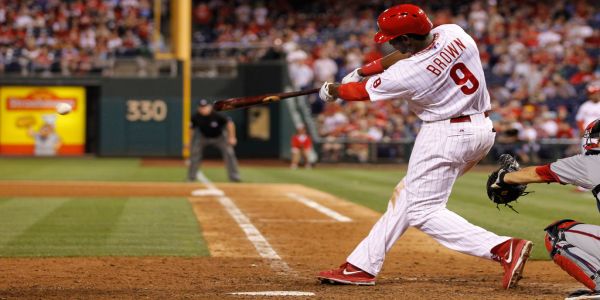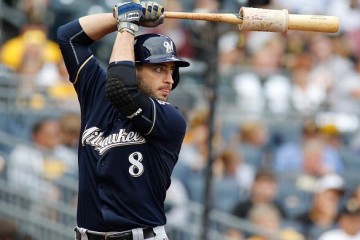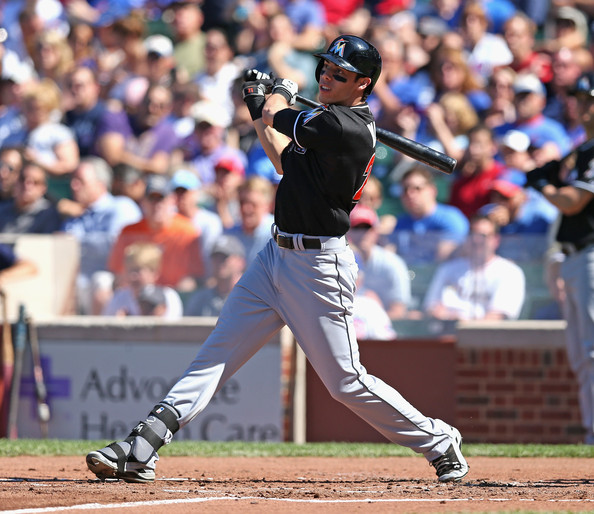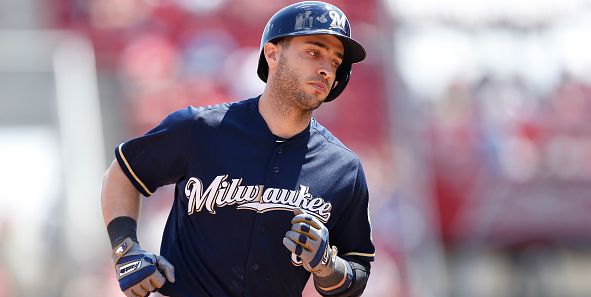2013 Fantasy Baseball, Plate Discipline: Left Fielders

We’ve gone through a majority of the positions and profiled certain players on the positive and negative lists for each position. For left fielders we are going to do something a little different. In this case, we will look at some of the commonalities for players on either side of the spectrum. Obviously, the main commonality will be the swinging strikes statistic since that is governing the rest of them. In the science world, they would call that the control statistic.
We would expect the other statistics to follow that one, but they don’t always follow that statistic. In particular, the contact rates should follow the most closely since swinging strikes negatively impact the contact rate. The interesting two will be the strikeout to walk ratio and the swinging at balls statistics. Those statistics aren’t directly tied to the other two rates, so we will see some variance. Variance is always an interesting thing. It will be more vivid when we look at the numbers.
|
SwStr |
SO/BB |
SWB |
Contact |
|
| Nate McLouth |
2.9 |
0.96 |
18.7 |
92.4 |
| Michael Brantley |
3.0 |
1.64 |
23.7 |
92.1 |
| Juan Pierre |
4.1 |
1.68 |
30.8 |
90.4 |
| David Murphy |
5.4 |
1.83 |
27.7 |
86.9 |
| Daniel Nava |
5.6 |
1.44 |
25.3 |
85.6 |
| Melky Cabrera |
5.8 |
2.00 |
33.3 |
87.2 |
| Mike Trout |
6.3 |
1.51 |
27.3 |
83.8 |
| Gregor Blanco |
7.4 |
2.51 |
23.8 |
82.7 |
| Carl Crawford |
8.0 |
1.91 |
30.2 |
83.4 |
| Ryan Braun |
8.3 |
1.92 |
32.5 |
79.9 |
| Gerardo Parra |
8.6 |
1.67 |
38.4 |
82.3 |
| Matt Holliday |
8.8 |
1.47 |
28.9 |
82.2 |
| Matt Joyce |
8.9 |
1.55 |
24.6 |
78.2 |
| Alex Gordon |
9.1 |
2.64 |
30.2 |
79.2 |
| Lucas Duda |
9.4 |
1.86 |
22.4 |
74.6 |
I point your attention to the strikeout to walk ratios. In this case we see no one with a higher rate than 2.64 and only two players had a rate north of two to one. This is particularly telling in that it is strongly correlated with the control statistic. This makes perfect sense and for those that play fantasy baseball, the strikeout to walk ratio might be the most relevant for your everyday success.
While it is not shown here, the line of demarcation on walk rates is likely ten percent. Fourteen of the thirty regular left fielders had walk rates north of ten percent. Yet, only six of those players are a part of the top group. That by itself is a very important point. It simply means that a high walk rate and plate discipline are not necessarily the same thing. This is particularly true if we define plate discipline by how often someone makes contact.
On the flip side, the strikeout rate tends to have 20 percent as the league average. Only two of the twelve players with a strikeout rate above twenty percent were a part of the top group (Gregor Blanco at 20.1 percent and Ryan Braun at 21.5 percent). The rest were below 20 percent with Juan Pierre registering as the only player at the position to be under ten percent.
In terms of the contact rates, Andy Dirks is the only American League left fielder in the top group with a contact rate over 80 percent (80.1). Domonic Brown is the only National League left fielder to make the list in that department and his rate was a similarly borderline 80.7 percent. So, strikeout less than 20 percent of the time and make contact more than 80 percent of the time and you will likely find yourself on the top half of the list.
|
SwStr |
SO/BB |
SWB |
Contact |
|
| Alfonso Soriano |
13.5 |
6.94 |
47.0 |
75.6 |
| Justin Upton |
13.4 |
1.91 |
25.0 |
69.1 |
| Dayan Viciedo |
13.2 |
4.40 |
42.8 |
75.3 |
| J.D. Martinez |
13.1 |
7.15 |
35.3 |
74.6 |
| Bryce Harper |
12.2 |
1.21 |
35.7 |
76.0 |
| Xavier Paul |
12.2 |
1.63 |
30.9 |
72.3 |
| Yoenis Cespedes |
12.1 |
3.08 |
32.2 |
74.8 |
| Carlos Quentin |
11.8 |
1.37 |
30.1 |
76.1 |
| Carlos Gonzalez |
11.4 |
2.26 |
33.5 |
74.8 |
| Starling Marte |
11.2 |
5.30 |
37.9 |
77.6 |
| Jason Bay |
10.9 |
2.55 |
26.2 |
72.2 |
| Vernon Wells |
10.2 |
2.71 |
38.3 |
79.5 |
| Andy Dirks |
9.8 |
2.37 |
35.5 |
80.1 |
| Domonic Brown |
9.7 |
3.18 |
33.2 |
80.7 |
| Josh Willingham |
9.6 |
1.91 |
20.5 |
73.9 |
Anyone that knows me by now knows I am a huge Houston Astros fan. It’s hard to admit that these days, but when you are a hardcore fan you have to stick with your team through thick and thin. So, consider the following comparison between two players and tell me which one should be the starting left fielder and which one should be toiling in Oklahoma City.
. . . . . . . . . . . . . . .SwStr. . . . .SO/BB. . . . .SWB. . . . .Contact
Player A. . . . . . . .13.1. . . . . . .7.15. . . . . 35.3. . . . . ..74.6
Player B. . . . . . . .. 7.4. . . . . . .1.94. . . . ..17.1. . . . . ..78.9
It doesn’t take a genius to figure out that the first player is J.D. Martinez because those numbers under Player A are the same as above. The second player is Robbie Grossman who was demoted a few weeks ago. The relatively low contact rate is a part of the problem for Grossman, but it also gets back to the difference between process and results that I talked about in the last couple of editions of the plate discipline series.
Grossman had a .275 BABIP in a little more than a month of action. J.D. Martinez has a .313 BABIP in a little more than two months of action. If you split the difference on the two players (say .290) then you would probably see Grossman either in left field or at least in the mix while seeing Martinez’s respectable .250 average somewhere near the toilet. While it is true that Martinez has more power than Grossman, Grossman is a superior defender, so the lion share of the difference comes in batted ball luck.
Meanwhile, four of the left fielders above have strikeout to walk ratios better than two to one and an additional four have rates better than three to one. If you combine that with the above chart it would show that 23 of the 30 regular left fielders have strikeout to walk ratios better than three to one. Ironically, some of them are big names in both real baseball and fantasy baseball. Yoenis Cespedes leads the group and that fact might be one reason why he hasn’t quite scaled the wall into the land of elite fantasy players quite yet.
Two of them have contact rates north of 80 percent and it is one reason why those players continue to outproduce the expectations that would come from being on a list like this. Both Andy Dirks and Domonic Brown have been pleasant surprises this year. Brown has been more surprising because of the awesome power that has accompanied the contact. When he swings at fewer balls he will become a frontline fantasy player for the long term.




